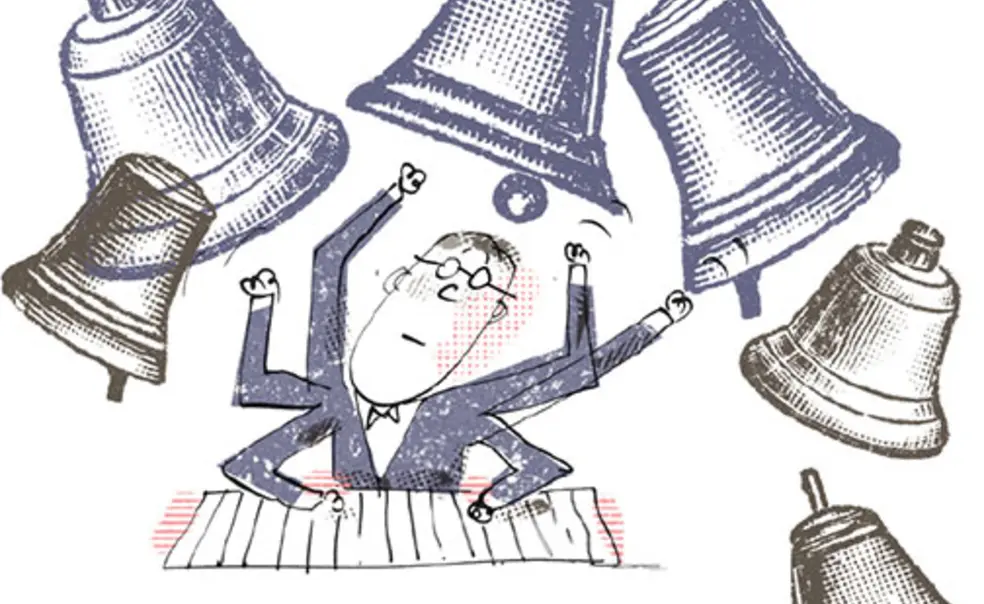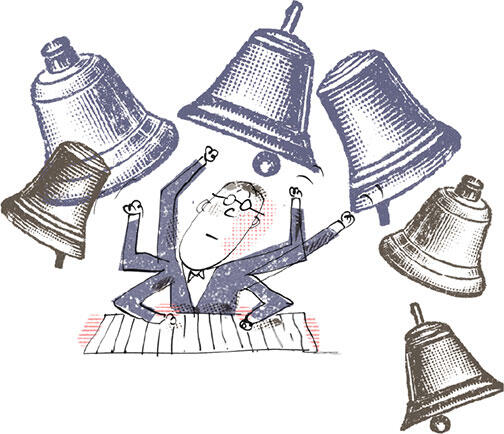Student Dispatch: For Whom the Bells Toll: Learning To Play the Carillon, High in the Sky
Alec Payne ’16 was dizzy by the time he arrived at his first music lesson of the academic year. It was hot and humid, and he had climbed 137 narrow, spiraling steps to the top of Cleveland Tower at the Graduate College. Awaiting him was Princeton’s 36.5-ton carillon: As Payne’s teacher, University carillonneur Lisa Lonie, has said, the carillon is a “public” instrument, and its music — or false notes — resound a mile away.
The carillon — a set of bells struck by hammers, controlled by a player at a keyboard — is the largest of the percussion instruments. Princeton’s is more massive than most: It has 67 bells and a clapper weighing 200 pounds.

Three students attended the Sept. 7 lesson given by Lonie, Princeton’s fourth carillonneur and the first woman in the job. Each is an experienced pianist, but the transition from piano is no snap. Instead of pressing small, responsive keys with fingertips, carillonneurs strike wooden keys — known as batons — with their fists to control the bells. The bells in the lower range — Princeton’s lowest note is a G that weighs 12,880 pounds — are controlled by foot pedals.
As on a piano, a player can crescendo and diminuendo on the carillon, by altering the force used to press the batons and foot pedals and “how fast you’re throwing that clapper against the lip of the bell,” Lonie said.
Pounding on the batons looks painful, but she said it’s not: “The thrust is transferred up through your hand, so it doesn’t hurt.”
Payne, who has played piano for 10 years, said adjusting to the carillon’s foot pedals was tricky: “You have to coordinate twice as many limbs.”
The lesson marked the first time that Regina Cai ’15 played on the real carillon instead of on a practice console in the basement. The carillon was more difficult: “You can feel that the heavier bells are much harder to ring,” she said.
Lonie demonstrated, playing traditional pieces like “Old Nassau” as well as contemporary songs such as American Authors’ “Best Day of My Life.” Then the students got their chance, playing “America the Beautiful” and some short melodies. While there were a few wrong notes, Lonie told them to take it slow and just keep going.
Though no one on the ground could see the musicians, “playing,” said Payne, “was a little nerve-wracking.”












No responses yet